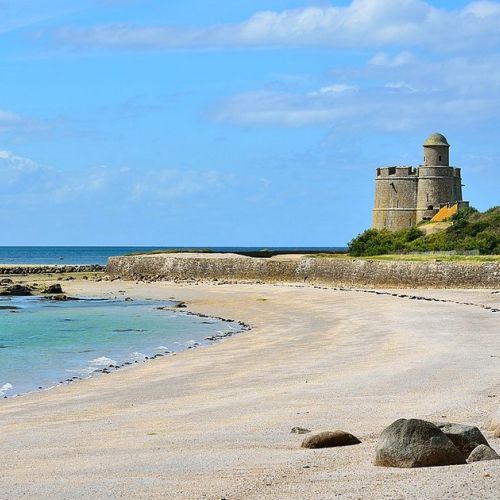Swimming: How To Avoid Cramps While Swimming?
At the pool or at the sea, it is not uncommon to suffer from a cramp while swimming. This violent and involuntary muscle contraction is very painful. It can also be dangerous when swimming far from shore, which is why it is important to know the right gestures to prevent its occurrence. We offer you 5 tips to avoid cramps while swimming.
Always warm up before swimming.
Warming up is the first of the 5 tips to avoid cramps when swimming. In swimming, these very painful contractions mainly affect the calves, feet, and hands.
To prevent their occurrence, it is advisable to always spend about 5 minutes warming up before diving, especially when the water is cold... For example, before a swim at the beach, you can jog in the sand to stretch and warm up the muscles in your legs.
You can also walk or bike to the pool or coastline. If you don't have a bicycle, you can simply lie on your beach towel and do pedaling exercises on your back.
2- Stay hydrated
Poor hydration is another common cause of cramps. That's why the second of the 5 tips to avoid cramps while swimming is to drink at least one liter of water per day.
To compensate for the loss of water and minerals due to swimming and other sports, it is recommended to choose water rich in magnesium such as Hépar or Rozana.
You can also prepare your own homemade cocktail by mixing half a liter of water with half a liter of fruit juice and a pinch of salt in a one-liter bottle. These drinks will help replenish your potassium and sodium reserves. Regardless of the chosen drink, drink a large glass before swimming and the rest afterwards.
3- Slip a banana into your beach bag.
To function optimally, your muscles need water as well as minerals such as sodium, potassium, and magnesium. That's why another one of the 5 tips to avoid cramps while swimming is to have a mineral-rich snack half an hour before swimming.
To be able to swim without any risk, avoid consuming foods that are too rich or hard to digest. Opt for potassium-rich fruits like a banana or two apricots, or a small handful of dried fruits (walnuts, almonds, or hazelnuts).
4- Avoiding risk factors.
If some drinks are beneficial for muscles, others can promote the occurrence of a cramp. Another of the 5 tips to avoid cramps while swimming is therefore to limit drinks containing caffeine (such as tea, coffee, and certain sodas) and to ban alcoholic beverages. Excessive caffeine and alcohol dehydrate, which increases the risk of cramping.
To prevent muscle tetany, it is also important to avoid:
• entering the water all at once
• immediately swimming with fins without taking the time to warm up beforehand (guaranteed calf cramp!)
• exerting too much effort and pushing beyond your physical capabilities.
5- Adopt the right reflexes in case of cramp.
If, despite the above advice, a cramp occurs, here are the right reflexes to make it go away:
• Do not panic, even if you are far from shore
• Do the plank and let yourself float on your back until you catch your breath
• Breathe calmly and then stretch the contracted muscle
• If possible, massage the painful area before the cramp fully appears. A simple massage usually suffices to stimulate the skin and dissipate the contraction.
Now you know what to do to prevent and relieve cramps while swimming. These different tips are important to reduce the risk of drowning during swimming.
At the end of your swimming session, take the time to recover after exertion by drinking water or your homemade drink in small sips, walking for at least 5 minutes, and gently stretching your muscles (do slow and smooth passive stretches).







